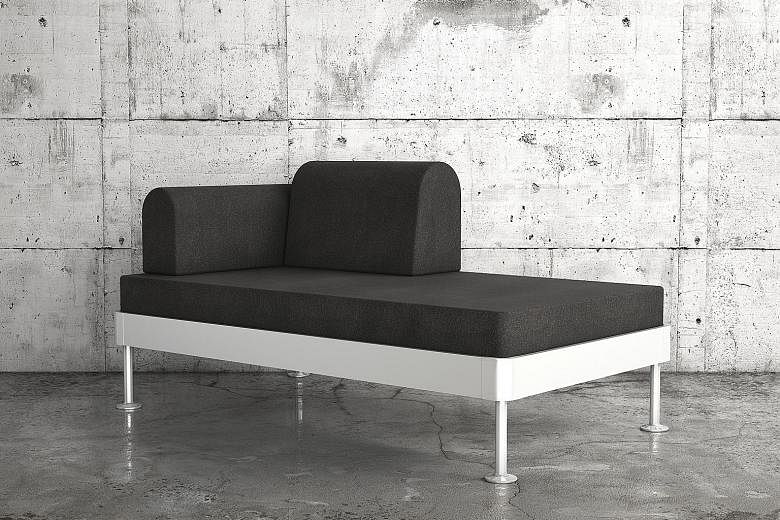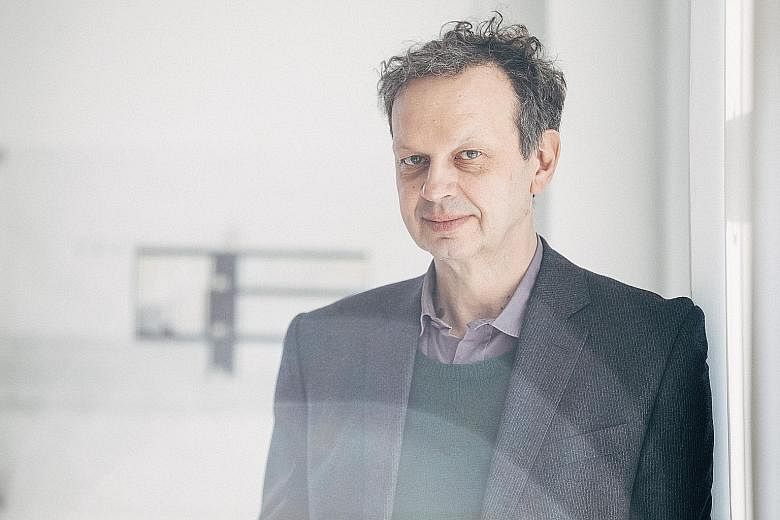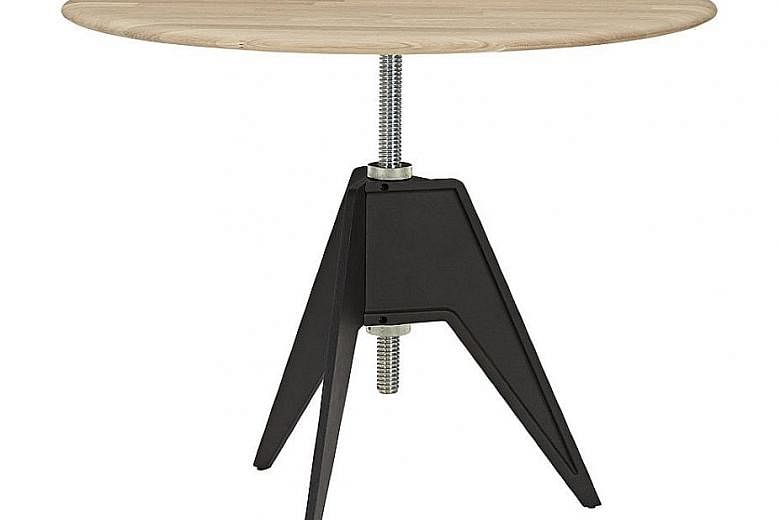NEW YORK • As snow swirled through Manhattan this month, British designer Tom Dixon found himself in a cosy spot above it all, standing atop a twin-size bed with a dozen students at the Parsons School of Design in Greenwich Village.
He was trying to make a radical point: that Ikea, the Swedish furniture giant known for beds and dressers that are so inexpensive they are often perceived as being disposable, could manufacture a collection of affordable, heirloom- quality pieces to last a lifetime.
To demonstrate the strength of the bed's extruded aluminium frame, he challenged the students to crush it. They teetered on its metal edges like acrobats on a high wire, until no more people would fit.
End result: barely a wiggle.
Even more remarkable, the bed has built-in channels that allow it to be customised with headboards, night stands and other non-Ikea add-ons. It is part of a new Ikea concept called Delaktig, which will be unveiled at the Salone del Mobile design fair in Milan next week.
"It's very much something that can mutate according to your changing conditions," said Dixon, 57, who has a tight mess of curly hair and a polished gold tooth. "You could put on a lamp, a phone charger, a side table. You could raise or lower it or put it on wheels. It can go from being a student bed to a posh couch and then back again."
The project is his moon shot for the future of furniture - the latest gamble from one of Britain's foremost tastemakers.
Best known for lighting and furniture that flit between the bravely industrial and supremely elegant, including his iconic Screw side tables that resemble oversized automotive jacks, Dixon's creations have typically appealed to a more rarefied and affluent clientele.
But in recent years, he has emerged as a Terence Conran-like figure for a new generation, designing interiors for hotels and restaurants such as the Mondrian London at Sea Containers; collectible furniture sold at high-end design fairs; an ever-expanding range of lighting and furniture; stores in London, Los Angeles and New York; and even home accessories such as notebooks.
Fashion designer Paul Smith, who is among Dixon's earliest clients and remains a close friend, put it this way: "He understands the use of materials, the process of manufacturing and the importance of thinking about how something will ultimately be used."
Dixon was born in Tunisia, where his father taught English, but was raised mainly in England after his family moved there when he was four. He lasted just six months at the Chelsea College of Arts after high school and channelled his energy into music. In the early 1980s, he played bass for the band Funkapolitan, which appeared on the BBC show Top Of The Pops, opened for The Clash and recorded at Electric Lady Studios in New York.
His first flirtations with design came when he and a few partners started the London clubs Language Lab and Titanic, and he would weld sculptures on stage as experimental performance art.
"In the club world, I knew lots of people and they would turn into hairdressers and photographers who would need a little bit of metal welded," Dixon said. "It was through the joy of metalwork and resolving problems that I became a designer."
His creations quickly turned more ambitious and, by 1985, he was transforming scrap metal into furniture. They included his S-Chair, which balanced a cobra- shaped metal frame, wrapped with rubber inner tubes, atop a Volkswagen Golf steering wheel.
Soon, Giulio Cappellini, art director of Italian furniture company Cappellini, heard about the iconoclastic young gun. He was impressed after meeting Dixon and worked to put a number of Dixon's designs into production, catapulting the designer's name beyond Britain.
The most successful was the S-Chair, which is now in the permanent collections of the Cooper Hewitt, Smithsonian Design Museum; Museum of Modern Art; and Victoria and Albert Museum.
From 1998 to 2008, Dixon, as head of design and then creative director of European housewares chain Habitat, spearheaded projects such as the VIP (Very Important Products) collection, which introduced collaborations with celebrities such as electronic music duo Daft Punk, actor Ewan McGregor and singer-songwriter Carla Bruni.
As the manufacturer of his own products, he sold a majority of his company to investors. "I'm a minority owner in my own name, which is a familiar way of acting in the fashion business, but is most unusual in our game," Dixon said.
Given his history of doing the unexpected, his collaboration with Ikea is not that shocking.
What is more surprising, perhaps, is the focus on longevity.
"Nobody wants to do throwaway objects," said Mr Marcus Engman, head of design at Ikea, which began working with Dixon 11/2 years ago. "The thing that is nagging in people's minds about mass production is that everything looks the same. But could you mass-produce uniqueness? That's the perfect crime."
To give it a push, Dixon and Ikea held workshops such as the one at Parsons, where students developed concepts for accessories that would allow Delaktig to become, among other things, a dining table with storage compartments or an all-in-one nursery unit.
Dixon plans to make upscale components under his own brand, which may include marble side tables. "The measure of success is if you manage to get a whole eco-system around this platform," he said. "Then it takes on a life of its own."
NYTIMES



